BIKES YOU’VE NEVER SEEN BEFORE: 1952 RIEDEL-IMME R100
During World War II Norbert Riedel had designed a two-stroke starter engine for the first Luftwaffe ME262 jet fighters. After the war he designed a light motorcycle. The American military were keen to obtain his jet engine starter motors and supplied him with production machinery — which he could also use for motorcycle production.
Norbert Riedel’s motorcycle had an egg-shaped engine that displacement of 98cc and made 4.5 horsepower. The cylinder and the head were one piece. The transmission had no neutral gear. The clutch lever could be held in by a clip—much like an ATV or bicycle front brake in lieu of putting the bike in neutral. His R100 Riedel was designed with some restraints in place—it had to be cheap, easy to build, and since he only had about 75% of the raw materials he needed since Germany’s steel foundry were bombed, the frame and fork tubing had to be all the same diameter tubing.
 The single-sided front fork was mounted on linkage arms fixed the head tube. The dial was used to control damping.
The single-sided front fork was mounted on linkage arms fixed the head tube. The dial was used to control damping.
There was a one-sided front fork (with one fork leg) and the one-sided swingarm, to which the engine was fastened, doubled as the exhaust pipe. The chassis was a simple bridge between the steering head and swingarm pivot, and the fuel tank was a streamlined egg that mimicked the engine shape. The gearbox used internally sliding shafts that force ball bearings outward to lock each gear in place. Shifting was handled by a three-speed speed handlebar shifter (the shift lever couldn’t be on the engine, because it went up and down with the rear suspension). The front and rear wheels were interchangeable.
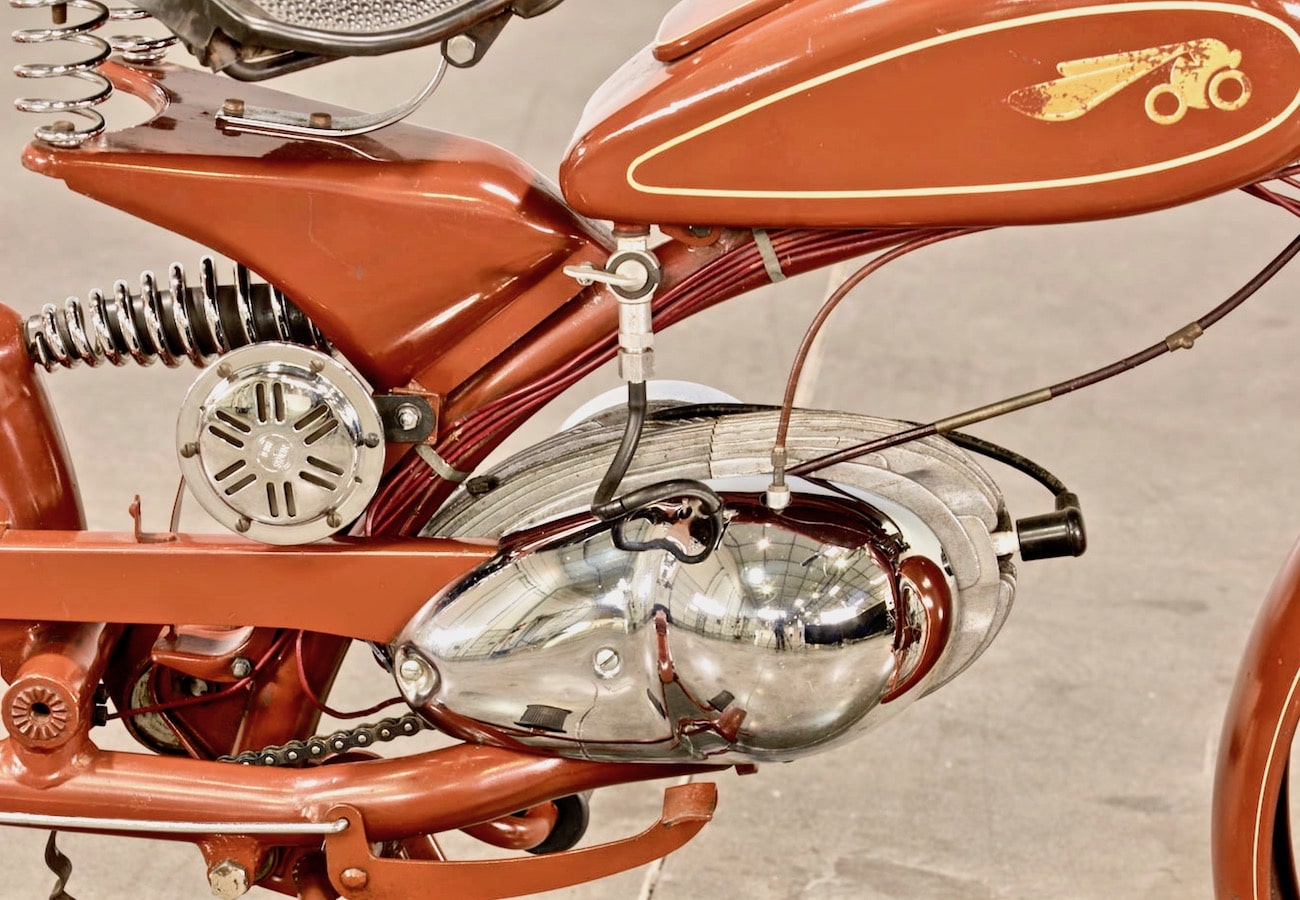 The carb is hidden behind the chrome dome, but it is not a rotary valve engine, it is a piston port. The cylinder and head are one cast piece and the transmission is a precurser to Hodaka’s ball receiver shift mechanism.
The carb is hidden behind the chrome dome, but it is not a rotary valve engine, it is a piston port. The cylinder and head are one cast piece and the transmission is a precurser to Hodaka’s ball receiver shift mechanism.
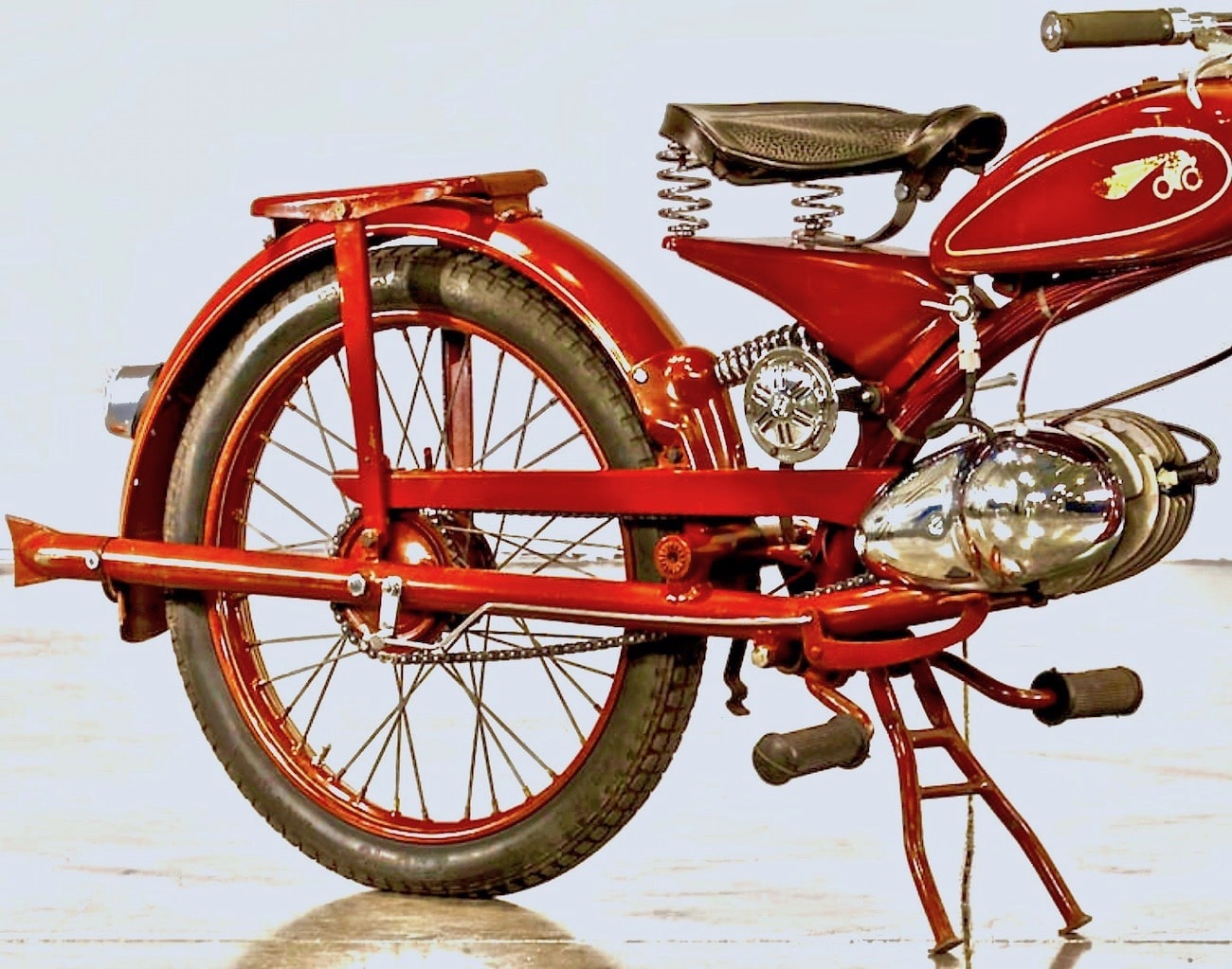 The exhaust pipe is also the swingarm. The swingarm pivot is visible below and behind the horn. The swingarm bolts to the exhaust port, pivots just in front of the rear tire and is securely bolted to the rear axle. The result? When the rear wheel moves in one direction, the engine swings the other way.
The exhaust pipe is also the swingarm. The swingarm pivot is visible below and behind the horn. The swingarm bolts to the exhaust port, pivots just in front of the rear tire and is securely bolted to the rear axle. The result? When the rear wheel moves in one direction, the engine swings the other way.
In 1948 Riedel found a production facility in Immenstadt, Germany. Imme is a German word for bee, and the bike was named the Riedel-Imme R100. And the logo was a bee. In 1949, Norbert Riedel produced 80 motorcycles. By the end of 1950 he was manufacturing 1000 a month. Production reach 12,000 by 1952 when warranty issues stopped production. During the delay, Riedel designed a twin-cylinder 150cc engine of similar appearance to his 98cc single. Between 1953 and 1956 Riedel AG built a 175cc Imme version called the “Große,” or “Large One.” But, warranty claims with the innovative single-sided crankshaft sank the company in the bad economy of a devasted Germany.
 The front and rear wheels are interchangeable, al lyou have to do is bolt a sprocket on the front hub.
The front and rear wheels are interchangeable, al lyou have to do is bolt a sprocket on the front hub.
While not a motocross bike, Reidel-Imme is widely acknowledged by motorcycle designers as a masterpiece of elegant simplicity. It filled the desperate need for inexpensive transportation in post-war Germany. Riedel was a veteran in the German motoring industry, he began his career at Ardie in 1935, where he designed small two-stroke engines. Riedel’s first prototypes for his own machine were built after the Second World War. By June of 1948, he set up manufacturing in Immenstadt, where he could take advantage of skilled locals who had previously worked in Bavaria’s aircraft industry.
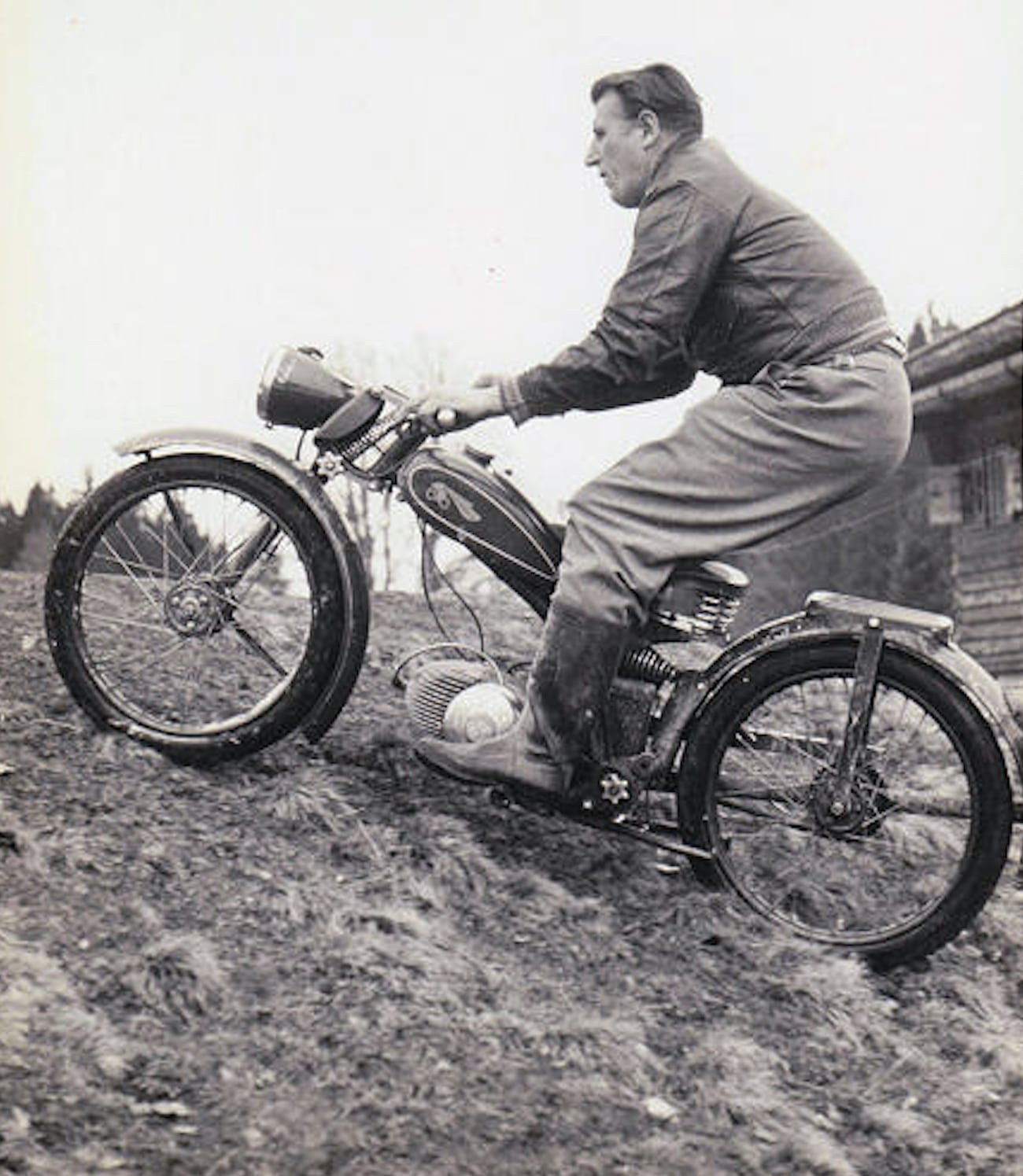 The rear suspension is an early version of the Yamaha monoshock. When the rear wheel hits a bump the engine goes down as the rear suspension comes up. This is the same system that the Yamaha PW50 uses.
The rear suspension is an early version of the Yamaha monoshock. When the rear wheel hits a bump the engine goes down as the rear suspension comes up. This is the same system that the Yamaha PW50 uses.
 Steel tubing was hard to come by in Bombed out Germany after WWII, so Norbert Riedel used as little of it as possible — and every tube is the same diameter.
Steel tubing was hard to come by in Bombed out Germany after WWII, so Norbert Riedel used as little of it as possible — and every tube is the same diameter.
After the bankruptcy of Riedel-Imme AG Norbert Riedel went back to work at Victoria Motorcycles, where he had worked before the war. At Victoria he designed the popular 1954 Victoria Swing, which got its name from the fact that the engine was directly connected to the swingarm and would rise and fall with the rear suspension. Just like on the Riedel Imme.
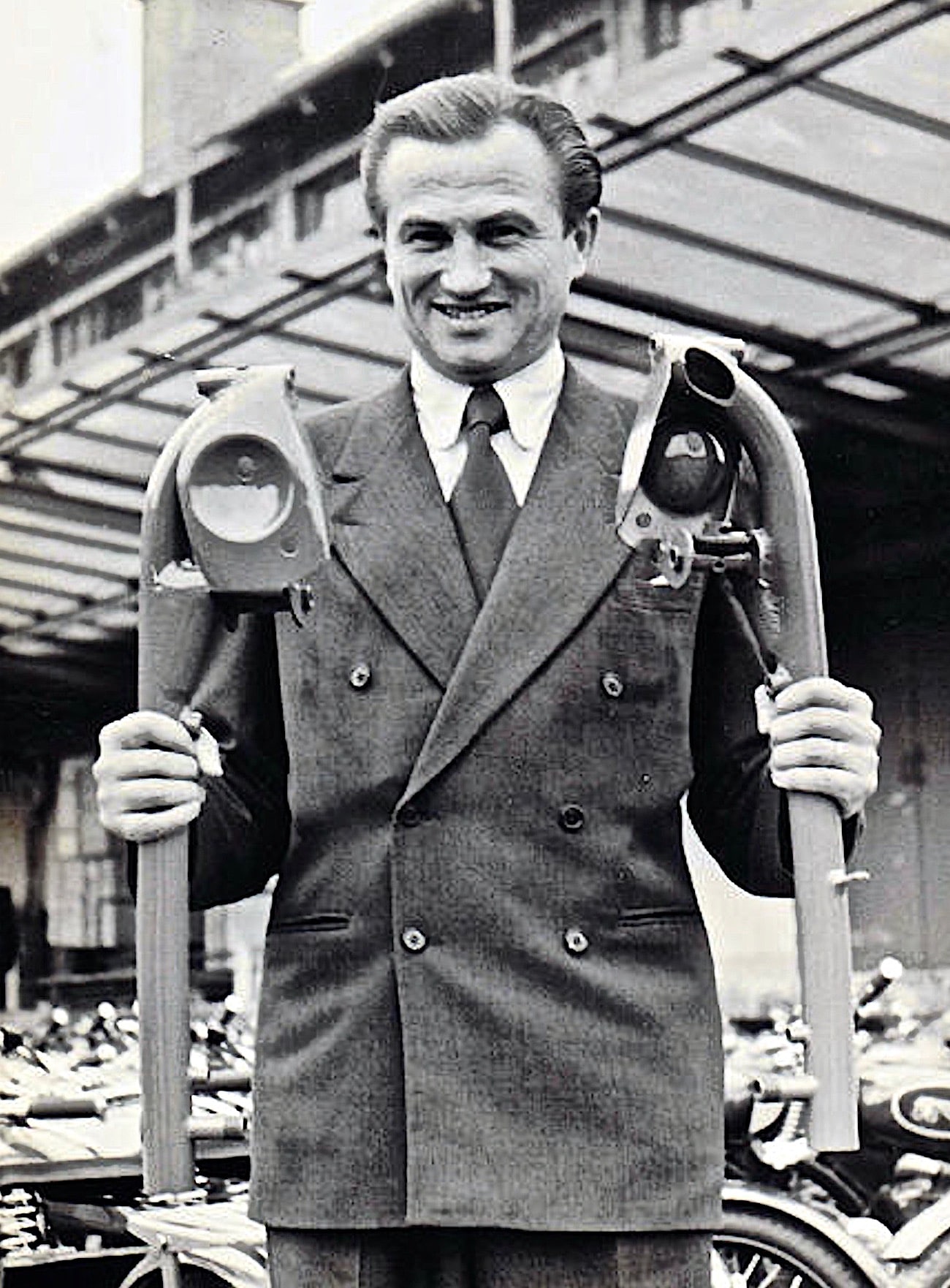 Norbert Riedel holding two forks legs. On a Riedel-Imme that’s enough for two bikes.
Norbert Riedel holding two forks legs. On a Riedel-Imme that’s enough for two bikes.
Norbert Riedel was killed in February, 1963, in an avalanche while skiing at the Zurs alpine resort in Vorarlberg, Austria. He was survived by his seven-year-old son Steffen, who would go on to write a well-reviewed German-language biography of his father’s life in postwar Germany. After his passing, the Riedel-Imme achieved cult status among design purist. It is an unappreciated and beautiful motorcycle that has engineering that often baffles viewers with innovative design elements—many of which were borrowed by mainstream manufacturers decades later.
The greatest honor for Norbert Riedel was when his bike was featured at the 1998 Guggenheim Museum’s “The Art of the Motorcycle” exhibition, the Riedel-Imme was hailed as one of the greatest motorcycle designs that no one ever heard of.


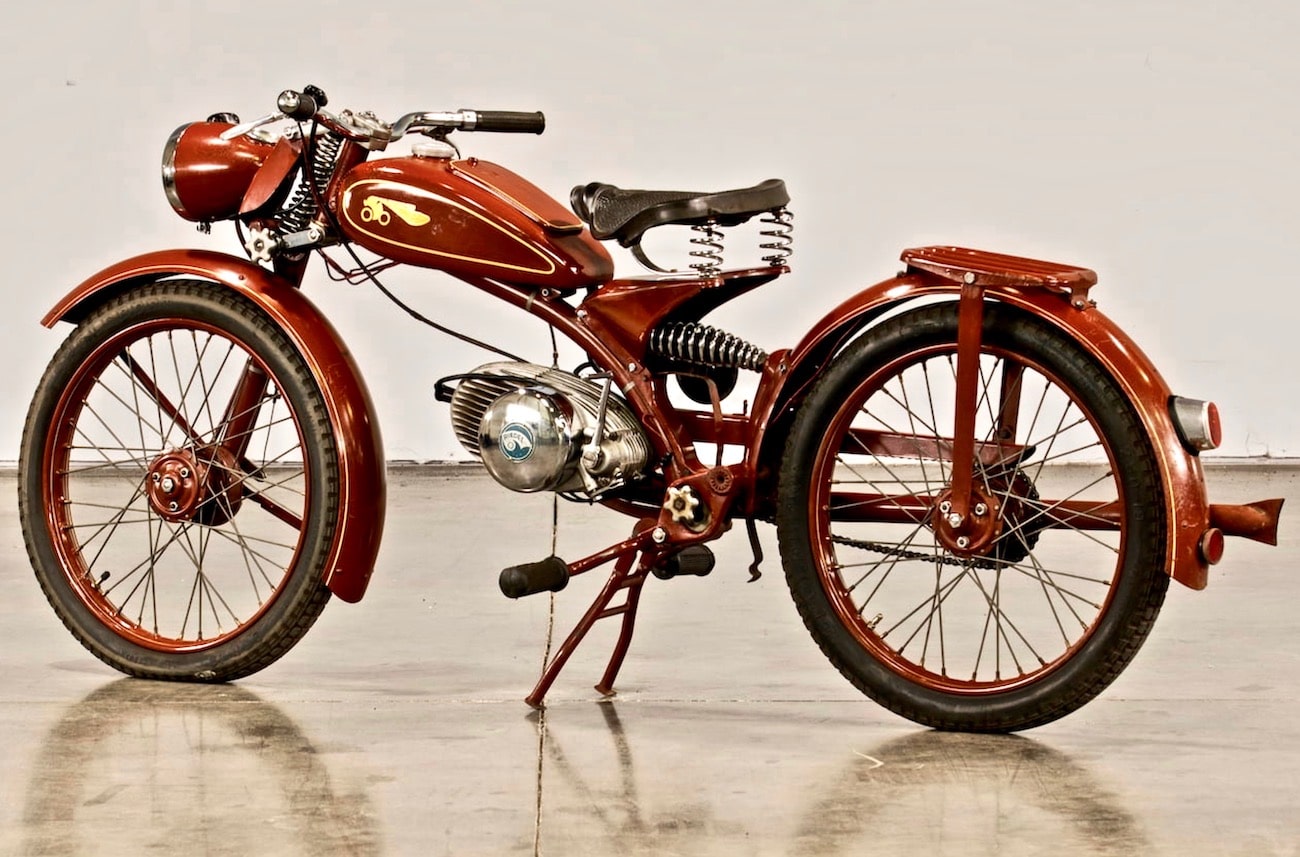
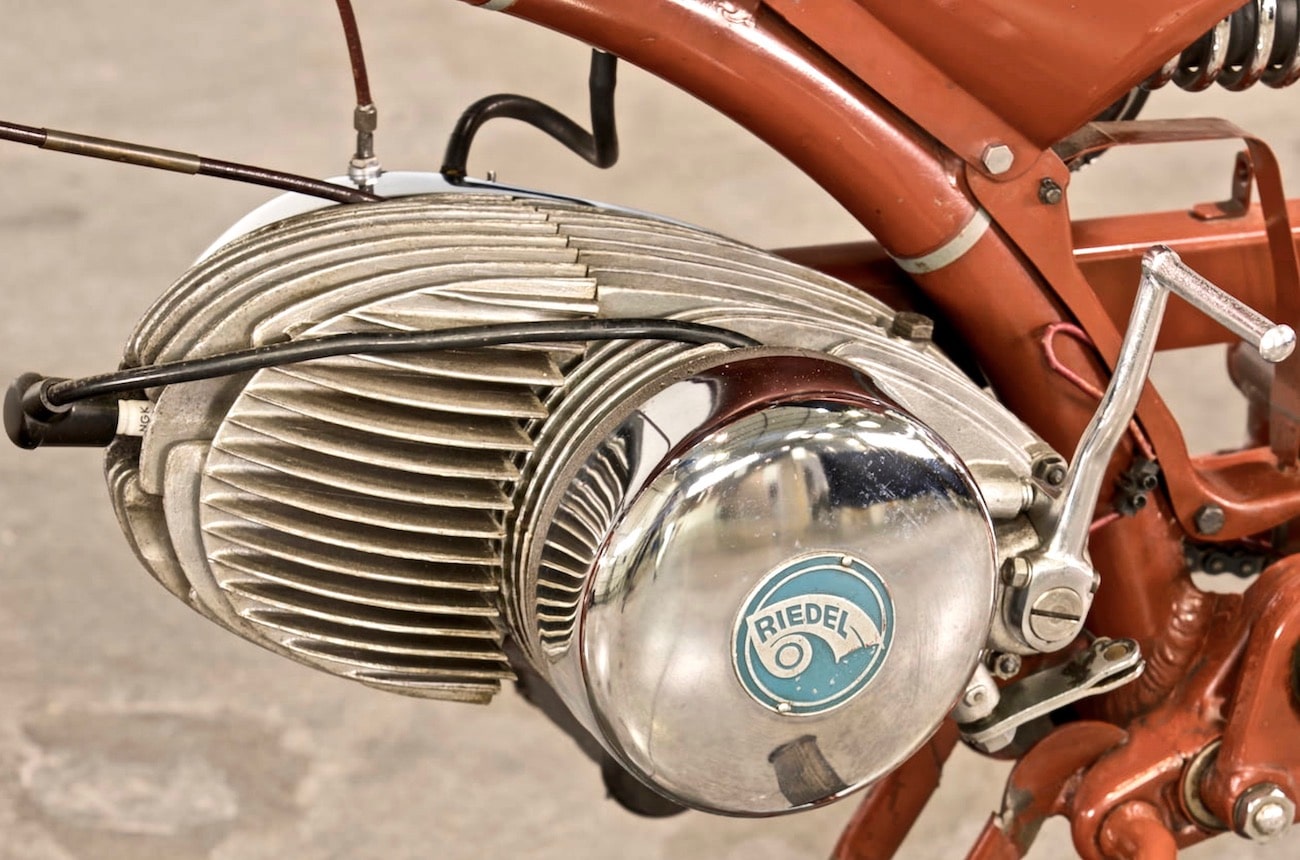



Comments are closed.